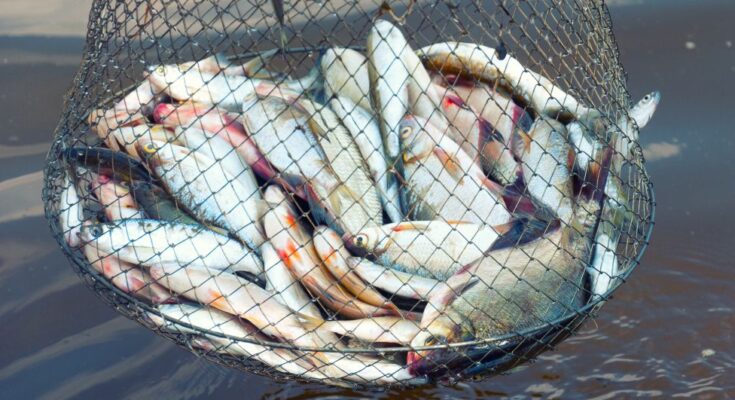Aquaculture in India is an important economic activity and a flourishing sector with varied resources and potentials. India ranks third in fisheries production, and second in aquaculture. There is a huge value chain involved globally while the COVID-19 pandemic has affected the trade not just in exports but also internal consumption. A solution can be reached by increasing aquaculture efficiency, introduction of new methods to increase yield. It is important for those involved with the sector to remain constantly abreast of the newest global advancements. Keeping this thought in mind, several industry experts from India and across the world gathered at a virtual conclave to discuss various topics pertaining to the industry.
Addressing the the conclave, Amit Saraogi, Managing Director, Anmol Feeds, said, “Fisheries alone has employed 145 million people and contributed to 1.07 percent of the GDP and generated export earnings of Rs 334.41 billion as per a recent estimate of National Fisheries Development Board. Aquaculture over recent years has not only led to substantial socio-economic benefits such as increased nutritional levels, income, employment and foreign exchange, but has also brought vast unutilised and under-utilised land and water resources under culture.”
“The measures announced under the Pradhan Mantri Matsya Sampada Yojana for fisheries and shrimp sectors to boost export and rural employment are encouraging. These measures will boost rural entrepreneurship, enable wealth creation to boost the economy to make India self-reliant. Aquaculture can become a huge source of generating employment and livelihood as investment in this sector is less compared to the benefits it can give. It can increase protein availability, create generation of rural employment and help achieve the food security goals. Especially with all the reverse migration happening across the country, aquaculture, fisheries and shrimp culture can help in rehabilitation of these migrants and help create a livelihood for them,” Saraogi added.
He further added, “We have a considerable amount of business in our neighbouring countries of Nepal and Bhutan. However, we are unable to reap the benefits of the Export Promotion Capital Goods Scheme as the earning is in Indian currency. I would like to take this platform to request the authorities to kindly look into this unconscious anomaly and help us to boost the economy of the country.”
The conclave focused on three main verticals- Health and Biosecurity to Ensure Safe Production; Culture System Improvisation and Advanced Nutrition for Optimum Growth and Better Production. The keynote speakers shared their experience on Aquatic Health & Nutrition while the panel discussion dwelled on how various countries and organisations have put the pandemic behind them and are charting the road ahead. This industry has the capacity to accommodate the migrant labourer population and can feed many of the economically challenged. It has the potential to help rebuild the nation’s economy and support the economic transformation of rural India.
During the course of the session, Dr. Andy Shinn, Senior Scientist, Benchmark R&D (Thailand) said, “There are perils of ignorance in aquaculture. Timing of treatments must be carefully implemented. In each farm situation the problems may vary. Juveniles and adults must be monitored and treated separately. Disinfecting all farm equipment thoroughly before treating is important. Seeking proper vet advice is essential without misplaced good intention by middlemen. Prepare emergency plans to maintain bio security. Procrastination and recklessness should be avoided in aquaculture.”
Speaking on the significance of fish protein for enhancing immunity amid pandemic, Dr. PE Vijay Anand, Senior Lead, Emerging Market Development, US Soybean Export Council (USSEC), said, “A lot has been spoken about in the last few months of COVID regarding immunity and how consumption of protein can boost the immune system. It is a well-known fact that fish protein is one of the healthiest. There is an opportunity for brands for market creation and boost the aquaculture system riding on this element.”
The panel discussed on the learnings for the aquaculture industry from COVID. The panellists emphasised the need for developing market strategy to boost production, marketing the products, responsible management practices and accurate knowledge acquisition by farmers to maintain quality and hygiene for internal as well as export markets.
India is home to more than 10 percent of the global fish diversity. With diverse resources ranging from deep seas to lakes in the mountains and more than 10 percent of the global biodiversity in terms of fish and shellfish species since independence, the country has shown continuous and sustained increments in fish production. National Institute of Agricultural Economics and Policy Research reported the projected demand would go 11.80 million metric tonnes by FY21. Fish production rose from 800,000 tonnes in FY 1950 to 4.1 million tonnes in the early 1990s. From 1990 through 2010, Indian fish industry accelerated, reaching a total marine and freshwater fish production to about 8 million metric tonnes.





